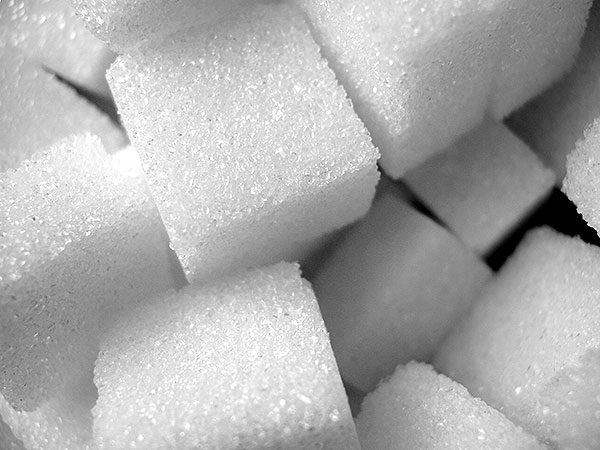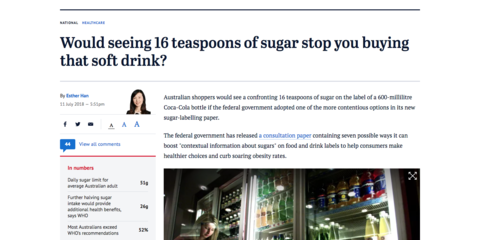
It's time for added sugars to be unmasked
Improved added sugar labelling across all packaged foods would help guide Australians to healthier food choices, according to The George Institute for Global Health.
The George Institute today supports the announcement of the Federal Government’s public consultation into added sugar labelling in Australia.
Options under consideration include having added sugar clearly quantified in the nutritional information panel on the back of products and clearer identification of sugars in the ingredients list.
Public health lawyer Alexandra Jones of The George Institute for Global Health said the changes would help Australia shoppers identify the hidden sugars in their diet.
Ms Jones said: “The Australian Dietary Guidelines recommend limiting the intake of added sugar but we know at least half of all Australians are eating more than they should be.
“Good sugars are an integral part of a healthy diet and we need to be able to separate sugars naturally present in dairy, fruits and vegetables from sugars added during manufacturing.
“Added sugars are empty calories and a major contributing factor to the obesity epidemic, rising rates of type 2 diabetes, and tooth decay.”
We believe this will not only make it clearer for shoppers who right now don’t know how much added sugar is in their food, it may also prompt the food industry to reduce the amount of sugar they put into processed foods.”
Other options include visual displays of the amount of sugar in a product or warning-style advisory labels on the front of packaged foods.
In 2017 researchers from the George Institute found 87 per cent of discretionary foods included added sugars, compared to 52 per cent of core foods. Discretionary foods such as cakes, pies, ice cream, pastries, processed meats, potato chips and soft drinks contained on average almost four times more added sugar than core foods such as cheese, milk, bread, yoghurts or plain cereals like oats.
Ms Jones added: “Consumers deserve to know what’s in the food they are eating and as a priority we support having the amount of added sugar in a product clearly spelt out, and also an improvement in the way sugar is listed in the ingredient list.
“There are 42 different names for added sugar ranging from honey, to agave nectar and even turbinado which can be very confusing. Currently manufacturers can choose to list these ingredients separately but we believe they need to placed together in the ingredients list. It will help people see at a glance just how much sugar is in a product.
“We recognise that this alone will not solve Australia’s obesity crisis, but every little step helps and we welcome the chance for Australia to be a global leader in this area.”
Added sugar improvements were approved on nutrition labels in the USA in 2016, with implementation currently underway. Canada has also implemented changes to sugar labelling in its ingredients list.
Improved labelling of added sugar would also mean this information could be used to strengthen the Health Star Rating algorithm, which is currently being reviewed.
The options presented are the culmination of work in the Forum of Food Regulation that commenced in April 2017, with a final decision on any changes proposed expected in late 2018.
The consultation has just opened and will close on 19 September 2018.




